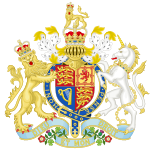- Dress Act 1746
-
The Dress Act was part of the Act of Proscription which came into force on 1 August 1746 and made wearing "the Highland Dress" including tartan or a kilt illegal in Scotland as well as reiterating the Disarming Act. The Jacobite Risings between 1689 and 1746 found their most effective support amongst the Scottish clans, and this Act was part of a series of measures attempting to bring the warrior clans under government control by crushing Gaelic culture. An exemption allowed the kilt to be worn in the military, continuing the tradition established by the Black Watch regiment.
The law was repealed in 1782. By that time kilts and tartans were no longer ordinary Highland wear, ended by enforcement of the law and by the circumstances of the Highland clearances, but within two years Highland aristocrats set up the Highland Society of Edinburgh and soon other clubs followed with aims including promoting "the general use of the ancient Highland dress". This would lead to the Highland pageant of the visit of King George IV to Scotland turning what had been seen as the uncivilised outfits of mountain thieves into national dress claimed by the whole of Scotland.
The Act
Abolition and Proscription of the Highland Dress 19 George II, Chap. 39, Sec. 17, 1746
That from and after the first day of August, One thousand, seven hundred and forty-six, no man or boy within that part of Britain called Scotland, other than such as shall be employed as Officers and Soldiers in His Majesty's Forces, shall, on any pretext whatever, wear or put on the clothes commonly called Highland clothes (that is to say) the Plaid, Philabeg, or little Kilt, Trowse, Shoulder-belts, or any part whatever of what peculiarly belongs to the Highland Garb; and that no tartan or party-coloured plaid of stuff shall be used for Great Coats or upper coats, and if any such person shall presume after the said first day of August, to wear or put on the aforesaid garment or any part of them, every such person so offending ... For the first offence,shall be liable to be imprisoned for 6 months, and on the second offence, to be transported to any of His Majesty's plantations beyond the seas, there to remain for the space of seven years.Repeal
On 1 July 1782 Royal assent was given to Repeal of the Act Prescribing the Wearing of Highland Dress 22 George III, Cap. 63, 1782 and a proclamation issued in Gaelic and English announced:
Listen Men. This is bringing before all the Sons of the Gael, the King and Parliament of Britain have forever abolished the act against the Highland Dress; which came down to the Clans from the beginning of the world to the year 1746. This must bring great joy to every Highland Heart. You are no longer bound down to the unmanly dress of the Lowlander. This is declaring to every Man, young and old, simple and gentle, that they may after this put on and wear the Truis, the Little Kilt, the Coat, and the Striped Hose, as also the Belted Plaid, without fear of the Law of the Realm or the spite of the enemies.External links
 United Kingdom legislation
United Kingdom legislationPre-Parliamentary legislation Acts of Parliament by states preceding
the Kingdom of Great BritainActs of the Parliament of England to 1483 · 1485–1601 · 1603–1641 · Interregnum (1642–1660) · 1660–1699 · 1700–1706
Acts of the Parliament of Scotland
Acts of the Parliament of Ireland to 1700 · 1701–1800Acts of Parliament of the
Kingdom of Great Britain1707–1719 · 1720–1739 · 1740–1759 · 1760–1779 · 1780–1800
Acts of Parliament of the United Kingdom of
Great Britain and Ireland and the United
Kingdom of Great Britain and Northern IrelandChurch of England Measures Legislation of devolved institutions Acts of the Scottish Parliament
Acts and Measures of the Welsh Assembly
Acts of the Northern Ireland Assembly / of the Northern Ireland Parliament
Orders in Council for Northern IrelandSecondary legislation Categories:- History of the Scottish Highlands
- Political history of Scotland
- Acts of the Parliament of Great Britain concerning Scotland
- 1746 in law
- 1746 in Great Britain
- 1746 in Scotland
Wikimedia Foundation. 2010.

